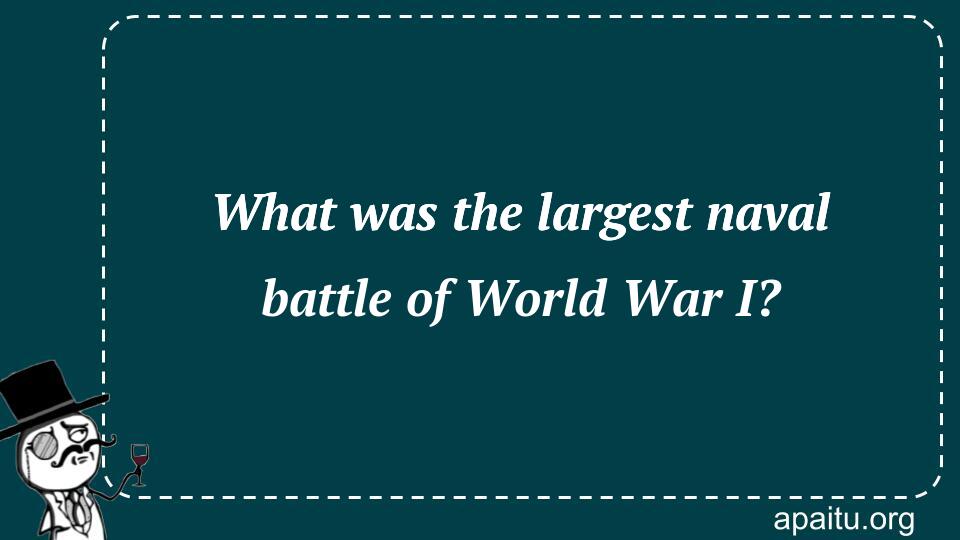Question
Here is the question : WHAT WAS THE LARGEST NAVAL BATTLE OF WORLD WAR I?
Option
Here is the option for the question :
- Jutland
- Durazo
- Somme
- Isonzo
The Answer:
And, the answer for the the question is :
Explanation:
The Battle of Jutland in 1916 was the largest naval engagement of World War I, involving about 250 ships and 100,000 troops on both sides. It was fought off the coast of Denmark and was the only significant naval engagement between the British and the German fleets. There were casualties on both sides, but Germany’s naval forces were never able to match Britain’s during the conflict.

The Battle of Jutland, fought on May 31-June 1, 1916, was the largest naval battle of World War I and one of the most significant naval engagements in history. The battle took place off the coast of Denmark’s Jutland Peninsula and involved the British Royal Navy and the German Imperial Navy.
The battle began when the German High Seas Fleet, under the command of Admiral Reinhard Scheer, attempted to break out of its naval blockade by the British Grand Fleet, under the command of Admiral John Jellicoe. The two fleets clashed in a massive engagement that lasted for over 12 hours.
The battle involved over 250 ships and over 100,000 sailors, and was characterized by fierce fighting and heavy losses on both sides. The British suffered more casualties and lost more ships, but the German fleet was forced to retreat back to port.
The Battle of Jutland was significant for a number of reasons. It was the largest naval battle of World War I and one of the most significant naval engagements in history. It marked the first and only time that the British and German fleets engaged in a direct confrontation during the war.
The battle also had significant strategic implications. The German fleet was unable to break through the British blockade, and the British maintained their dominance of the North Sea. This helped to secure the flow of supplies and resources to the Allies and played a significant role in the eventual outcome of the war.
The Battle of Jutland also hada significant impact on naval warfare. The battle demonstrated the importance of new technologies and tactics, such as torpedo boats, submarines, and long-range artillery. It highlighted the importance of intelligence gathering and communication, and showed the need for better coordination between different units of a fleet.
The battle also led to changes in naval strategy and tactics. The British, who suffered more casualties and losses, reevaluated their tactics and made changes to their fleet and training. The Germans, who suffered fewer losses, continued to develop new naval technologies and tactics, but were unable to break through the British blockade.
the Battle of Jutland remains a controversial and contentious event in military history. There is ongoing debate over the strategies and decisions made by both sides, as well as over the impact of the battle on the outcome of the war.
the Battle of Jutland was the largest naval battle of World War I and one of the most significant naval engagements in history. The battle involved over 250 ships and over 100,000 sailors, and was characterized by fierce fighting and heavy losses on both sides. The battle had significant strategic implications and impacted naval warfare for years to come. Despite ongoing debate over its significance and impact, the Battle of Jutland remains an important event in military history and a testament to the sacrifices and bravery of those who fought and died